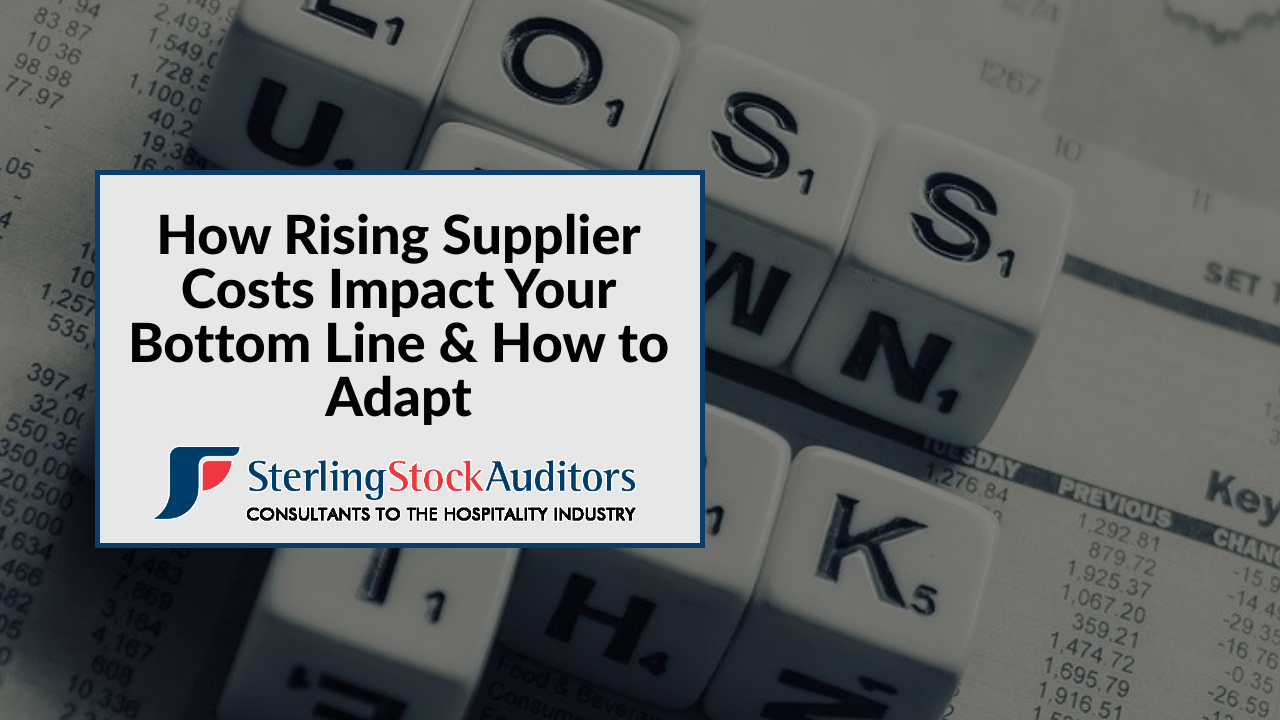
In the ever-evolving world of hospitality and retail, one constant challenge is rising supplier costs. Whether it’s due to inflation, increased production expenses, or supply chain disruptions, businesses in the licensed trade are facing higher costs for everything—from alcohol and food to operational supplies. Without a strategic response, these rising costs can eat into your profit margins and put financial strain on your business.
How Supplier Cost Increases Affect Your Business
- Lower Profit Margins
When suppliers raise their prices, your cost per unit goes up, but if your selling prices remain the same, your profit per sale decreases. Over time, this can lead to significant revenue loss. - Higher Operating Costs
Beyond the cost of stock, increased supplier expenses can impact packaging, logistics, and even utilities, making it more expensive to run your business. - Customer Pricing Sensitivity
Passing on the cost increase to customers by raising prices can be tricky. While necessary, it needs to be done carefully to avoid alienating loyal patrons. - Stock Control Challenges
With costs rising, managing stock efficiently becomes even more critical. Overstocking can lead to wastage, while understocking can mean lost sales opportunities.
How to Adapt & Protect Your Business
1. Review & Adjust Pricing Strategically
- Evaluate your current pricing model to ensure you’re maintaining profit margins.
- Instead of blanket price increases, consider targeted adjustments on high-demand or high-margin items.
- Use small, incremental increases rather than a large, sudden jump to minimize customer pushback.
2. Improve Stock Control & Reduce Waste
- Conduct regular stock audits to identify areas where you may be over-ordering or experiencing loss.
- Implement portion control and inventory tracking to ensure you’re using stock efficiently.
- Work with an independent stock auditor to gain insights into your sales trends and optimize ordering.
3. Negotiate with Suppliers
- Explore bulk purchasing options or long-term contracts for better pricing.
- Compare suppliers and don’t be afraid to switch if you find a more competitive offer.
- Ask about discounts, seasonal promotions, or alternative product options that may be more cost-effective.
4. Diversify Revenue Streams
- Introduce higher-margin products such as premium spirits, craft cocktails, or specialty beers.
- Offer bundled deals (e.g., food and drink pairings) to encourage spending while managing costs.
- Consider events, tastings, or subscription services to boost sales beyond standard bar or restaurant operations.
5. Monitor Industry Trends & Plan Ahead
- Stay informed about upcoming tax or duty increases (such as the recent alcohol duty changes) and factor these into your pricing strategy.
- Keep an eye on economic forecasts and supplier news to anticipate future cost changes.
- Regularly review financial reports and key performance indicators (KPIs) to track the impact of cost changes on your business.
Final Thoughts
Rising supplier costs are an unavoidable reality, but they don’t have to derail your profitability. By taking a proactive approach—reviewing pricing, improving stock control, negotiating with suppliers, diversifying revenue, and staying informed—you can adapt and thrive despite economic pressures.
At Sterling Stock Auditors, we help hospitality businesses navigate these challenges by providing expert stock audits, cost analysis, and profitability strategies. If you’d like support in adapting to rising costs, get in touch today!

